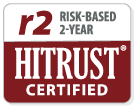by Elizabeth Morgenroth, Director of CDI, Curation Health
As patient care transitions from inpatient to outpatient, a holistic approach to clinical documentation improvement is a must.
Recently, a healthcare provider asked me why now was the right time to incorporate outpatient clinical documentation improvement into their workflows. My response was simple: The real question they should be asking is why wait.
In every reimbursement model, there is an opportunity for clinical documentation improvement. As more patient care transitions to outpatient environments, the need and value of a more holistic approach to clinical documentation improvement — regardless of the setting of care — is clear.
Wherever your healthcare organization is on the spectrum of transitioning from fee-for-service to value-based care, the reality is if you don’t already have an outpatient clinical documentation improvement (CDI) program in place, you are taking two major risks:
- Jeopardizing patient care. The primary value of clinical documentation is to improve patient care, and if your clinical documentation is not up to snuff, there is potential for a direct impact on patient care now and in the future.
- Negatively impacting the bottom line of your organization. In addition, your organization may be taking on unnecessary liability. The financial and reputational risk associated with Risk Adjustment Data Validation (RADV) audits and Office of the Inspector General (OIG) workplan clinical validation audits is very real, and it can have a negative impact on your bottom line — while also potentially tarnishing your reputation.
These risks to patient care and financial well-being can help make a strong case for creating and prioritizing outpatient CDI.
Effective CDI in every care setting ensures that the full complexity of managing patient care and the volume of work done to manage patient conditions is completely captured. Unfortunately, getting the documentation right the first time around isn’t as simple or straightforward as providers or clinical staff would hope. Neither is creating a CDI program in an outpatient setting.
Building on this initial blog that outlines the baseline business case for investing in an outpatient CDI program, we will be sharing two follow-up articles in May and June that explore the following:
- Part I: The Key Steps to Getting an Outpatient CDI Program Off the Ground — What would a project to implement outpatient CDI and support risk adjustment coding look like?
- Part II: The Elements that Make Up a Best Practice Outpatient CDI Program — What competencies and knowledge base are needed to support an industry standard risk-adjusted CDI practice?
Although it is complex, clinical documentation improvement is an essential component in making the successful transition to value over volume. While there may not be a fast and easy answer to creating a truly holistic CDI program in the healthcare enterprise (which includes both facilities and professionals), there are industry standards to assist you in creating a plan that results in a successful outpatient CDI program that can be optimized over time. We look forward to exploring these topics with you in the coming weeks and supporting your organization in its journey to value-based care.

